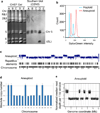Yeast: a simple model system to study complex phenomena of aneuploidy
- PMID: 24118136
- PMCID: PMC3951669
- DOI: 10.1111/1574-6976.12048
Yeast: a simple model system to study complex phenomena of aneuploidy
Abstract
Aneuploidy, the state of having a chromosome number different from a multiple of the haploid number, has been associated with diseases and developmental disorders. The role of aneuploidy in human disease pathology, especially in cancer, has been a subject of much attention and debate over the last century due to the intrinsic complexity of the phenomena and experimental challenges. Over the last decade, yeast has been an invaluable model for driving discoveries about the genetic and molecular aspects of aneuploidy. The understanding of aneuploidy has been significantly improved owing to the methods for selectively generating aneuploid yeast strains without causing other genetic changes, techniques for detecting aneuploidy, and cutting-edge genetics and 'omics' approaches. In this review, we discuss the contribution of studies in yeast to current knowledge about aneuploidy. Special emphasis is placed on experimental features that make yeast a simpler and efficient model to investigate the complex questions in the field of aneuploidy.
Keywords: adaptation; chromosomal instability; gene expression; karyotyping; phenotypic variation.
© 2013 Federation of European Microbiological Societies. Published by John Wiley & Sons Ltd. All rights reserved.
Figures
References
-
- Aguilera A, Gomez-Gonzalez B. Genome instability: a mechanistic view of its causes and consequences. Nat Rev Genet. 2008;9:204–217. - PubMed
Publication types
MeSH terms
Grants and funding
LinkOut - more resources
Full Text Sources
Other Literature Sources
Molecular Biology Databases



